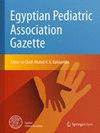Geospatial distribution of under-five mortality in Alexandria, Egypt: a cross-sectional survey
IF 0.5
Q4 PEDIATRICS
引用次数: 0
Abstract
Abstract Background Globally, infectious diseases, including pneumonia, diarrhea, and malaria, along with pre-term birth complications, birth asphyxia and trauma, and congenital anomalies remain the leading causes of death for under-five mortality (U5M). This study aimed to identify the geospatial pattern of U5M in Alexandria and its key determinants. Methodology We analyzed the geospatial distribution of 3064 deaths registered at 24 health offices reported from January 1, 2018 to June 30, 2019. We adopted two methods of analysis: geospatial analysis and the structural equation model (SEM). Result Neonates represented 58.7% of U5M, while post-neonates and children were 31.1%, 10.2%respectively. Male deaths were significantly higher compared to females ( P = 0.036). The main leading causes of U5M were prematurity (28.32%), pneumonia (11.01%), cardiac arrest (10.57%), congenital malformation (9.95%), and childhood cardiovascular diseases (9.20%). The spatial distribution of U5M (including the most common three causes) tends to be clustered in western parts of Alexandria (El Hawaria, Bahig, Hamlis, and Ketaa Maryiut). SEM showed the total effects of exogenous and intermediate variables on U5M. The U5M proportionately increased by living in rural areas (8.48), followed by crowding rate (8.35), household size (1.36), population size (0.52), and illiteracy average (0.06). On the contrary, the U5M decreased with increasing access to sanitation (-0.17) and access to drinking water (-4.55). Conclusion Illiteracy, and poor locality characteristics (household size, population density, and access to water supply and sanitation) were statistically significant predictors of U5M.埃及亚历山大市五岁以下儿童死亡率的地理空间分布:一项横断面调查
在全球范围内,包括肺炎、腹泻和疟疾在内的传染病,以及早产并发症、出生窒息和创伤以及先天性异常仍然是五岁以下儿童死亡(U5M)的主要原因。本研究旨在确定亚历山大市U5M的地理空间格局及其关键决定因素。我们分析了2018年1月1日至2019年6月30日在24个卫生办事处登记的3064例死亡的地理空间分布。我们采用了地理空间分析和结构方程模型(SEM)两种分析方法。结果新生儿占总U5M的58.7%,新生儿后占31.1%,儿童占10.2%。男性死亡率明显高于女性(P = 0.036)。导致U5M的主要原因是早产(28.32%)、肺炎(11.01%)、心脏骤停(10.57%)、先天性畸形(9.95%)和儿童心血管疾病(9.20%)。U5M的空间分布(包括最常见的三个原因)倾向于聚集在亚历山大西部地区(El Hawaria, Bahig, Hamlis和Ketaa maryut)。SEM显示了外源变量和中间变量对U5M的总体影响。农村地区的U5M按比例增加(8.48),其次是拥挤率(8.35)、家庭规模(1.36)、人口规模(0.52)、平均文盲率(0.06)。相反,U5M随着获得卫生设施(-0.17)和饮用水(-4.55)的增加而减少。结论文盲和贫困地区特征(家庭规模、人口密度、供水和卫生设施的可及性)是U5M的显著预测因素。
本文章由计算机程序翻译,如有差异,请以英文原文为准。
求助全文
约1分钟内获得全文
求助全文
来源期刊

Egyptian Pediatric Association Gazette
PEDIATRICS-
自引率
0.00%
发文量
32
审稿时长
9 weeks
期刊介绍:
The Gazette is the official journal of the Egyptian Pediatric Association. The main purpose of the Gazette is to provide a place for the publication of high-quality papers documenting recent advances and new developments in both pediatrics and pediatric surgery in clinical and experimental settings. An equally important purpose of the Gazette is to publish local and regional issues related to children and child care. The Gazette welcomes original papers, review articles, case reports and short communications as well as short technical reports. Papers submitted to the Gazette are peer-reviewed by a large review board. The Gazette also offers CME quizzes, credits for which can be claimed from either the EPA website or the EPA headquarters. Fields of interest: all aspects of pediatrics, pediatric surgery, child health and child care. The Gazette complies with the Uniform Requirements for Manuscripts submitted to biomedical journals as recommended by the International Committee of Medical Journal Editors (ICMJE).
 求助内容:
求助内容: 应助结果提醒方式:
应助结果提醒方式:


